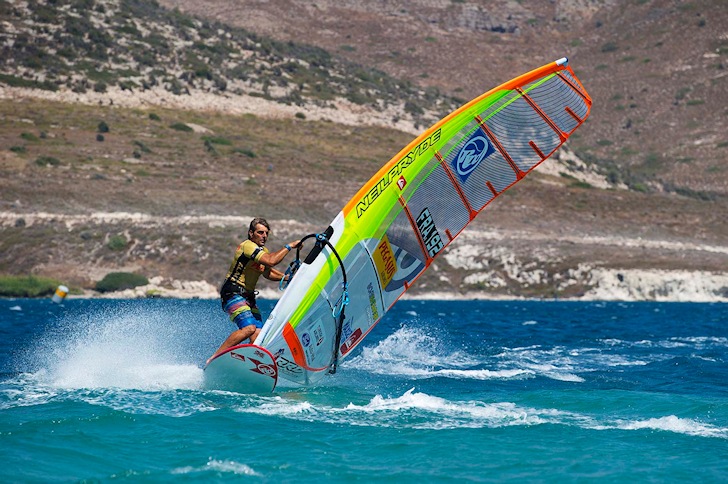Controlling a windsurf board and sailing in high wind conditions can be extremely difficult. Bearing away is not a problem if you take an upwind line in order to reduce speed and help sheet the rig in.
Jibing/gybing has its secrets, but in extraordinarily high winds and choppy waters, details play a decisive role, and only the survival jibe technique will get you sailing away.
Control, commitment, and timing; that's all you need.
When the wind is blowing hard, and you're heading into the wind, you must start carving your windsurf board earlier before jibing.
If you blast along and try to carve the board around from beam reach to beam reach, the wind will beat you, and you'll lose control.
Jibing in High Winds 101
Now that you're approaching the critical jibe in Super 7 stance, learn what to do when high winds come into play:
- Head upwind by raking the rig back, leaning the body forward to counter-balance, and trimming the board flat;
- The windier and choppier the water, the more you head upwind. Keep outboard and unhook as per a normal carve jibe. Lean forward more by flexing the front knee after unhooking;
- Before the board comes to a stop, come inboard and sheet in and down on the boom as hard as you can on the back hand while carving the board very tight;
- Change your feet as the board just passes the dead downwind stage of the jibe;
- If you have speed, release the rig after the foot change or sail out clew first on a very broad reach to avoid being overpowered;
There are differences between non-planing and planing jibes.
If you're planing, immediately rotate the rig after the switch foot, but if you're not planing, stay clew first and delay the rig rotator.
Finally, you should know that if you're really close to the wind, you can virtually bring the board to a stop and then "slam jibe" the board around.
You must exit on a broad reach. Otherwise, the rig gets whipped out of your hands.
Jibe from close reach to broad reach in high winds, not beam reach to beam reach.
Learning how to jibe in high winds is a windsurfing technique that can be discovered in "RYA Advanced Windsurfing" by Simon Bornhoft.
